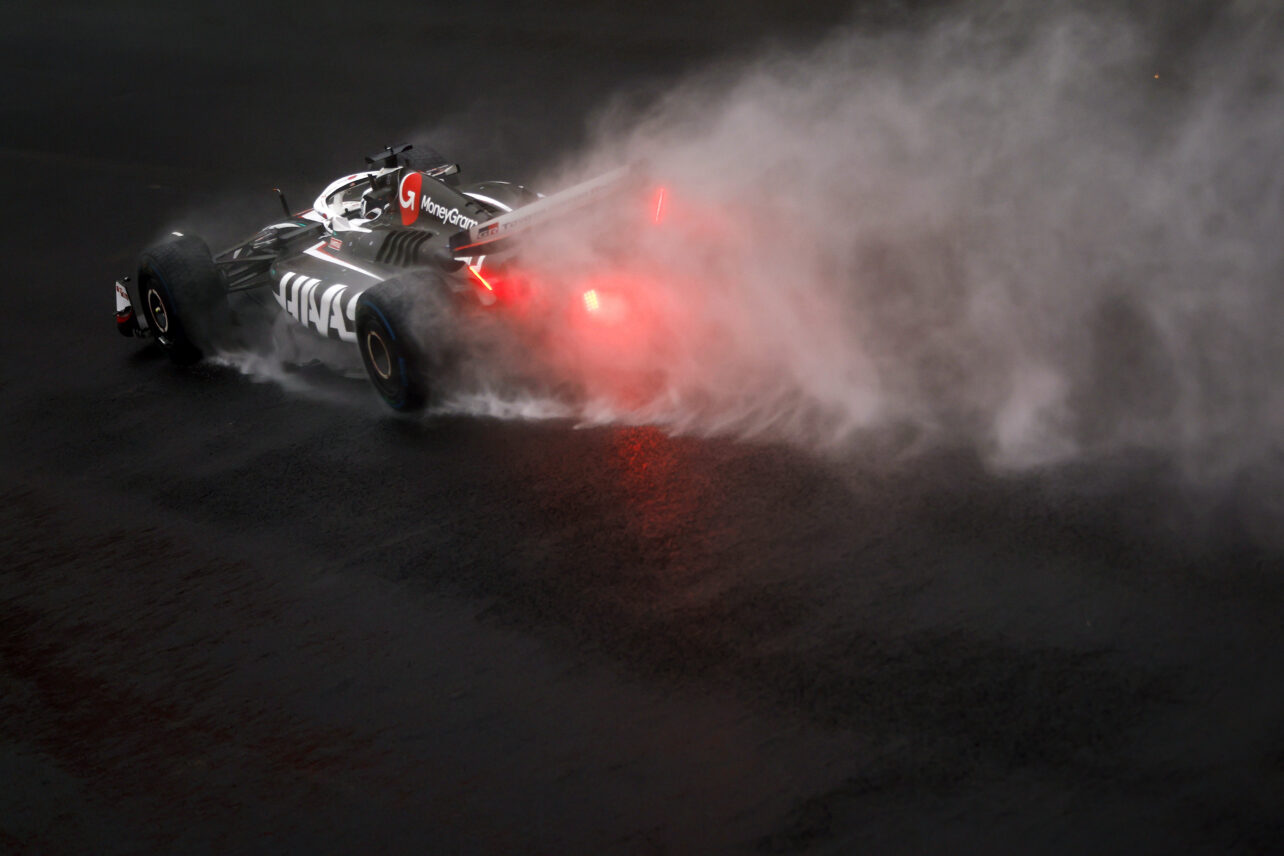F1 has a red flag problem.
Not how often they fly (or how rarely, depending on your outlook), but what happens during the time the race is stopped.
It’s a discussion that’s been brought up before – and it’s been reignited following the Sao Paulo GP, after a red flag allowed several drivers to get a fresh set of tyres without losing the time of a regular pitstop.
Earlier this year, Stefano Domenicali said F1 was looking at changing the regulations around red flag stoppages, but we’ve not heard anything since.
In it’s current form, a red flag period serves as a free, very long pitstop, and I don’t think that should be the case. So I figured I would give my suggestions to what the reshaped regulations should look like.
Red Flag Parc Fermé
There should be a red flag parc fermé rule. Teams are not allowed to change anything about the car, that cannot be changed by the driver using the controls inside the cockpit.
Wing adjustments, bodywork changes, tyres – you name it. If a team wants to make changes, it’s just like the parc fermé rules the rest of the weekend: You go to the back.
Tyre Changes
Now, there are situations where changing the tyres is necessary. Say there’s a puncture or it’s halfway come off the rim. In this case, after approval by the Technical Delegate, a team can fit a set available to them, that is the same compound and is the closest to the wear of the current tyre.
In this case, I define wear as the total amount of laps a tyre has done. So, say a car comes in during a red flag, having done 25 laps on a medium tyre and has a puncture, the Technical Delegate approves the change, and the team has a set of 15 lap old mediums in their pool, they would be allowed to fit this set without penalty. If they don’t have a set of the same compound however, they have to go to the back.
In the case of changing track conditions, the Race Director can allow all teams to change to a different specification of tyre, so for example if it goes from dry to wet, we don’t want to force teams to go out on slicks.
Damage
It’s common for cars to sustain damage prior to a red flag – something has to cause the red flag after all. But say you knock the endplate off your front wing or you knock a hole in your sidepod. Teams will take the opportunity to fit a new front wing or tape up the sidepod.
Not anymore. You break it, you race it.
Unless it’s a meatball flag situation, also known as “Pulling a Magnussen”, you have to replace your wing or fix your damage in a regular pitstop. For anyone who may not know the meatball flag, it’s flown to indicate that a car must return to the pits, and fix some specific issue, that could pose a safety risk to the driver or others.
Once again, if teams get approval from the Technical Delegate, they can replace or fix a given part, so it’s not a safety risk – but other than that, the car has to go to the back, or fix the damage during a regular pitstop.
What About Safety Cars, Virtual or Otherwise?
So the question some will probably ask, is this: What about safety cars? Should teams be allowed to pit, change tyres and adjust their cars under a safety car?
Yes, they should.
During a safety car the race is still going on – cars are still moving on track, and you lose time coming to the pits – so that’s fair game. And it leaves the option for teams to still be able to gamble on a safety car as part of their strategy – but they shouldn’t be able to gamble on a red flag, and get a completely free stop.
Red flags should not be a strategic gain – it should be a stopped race.
And there we go. We’ve solved the red flag problem once and for all! Or at least until the next red flag happens, and there’s some shenanigans I forgot to account for that screws up this entire idea.
